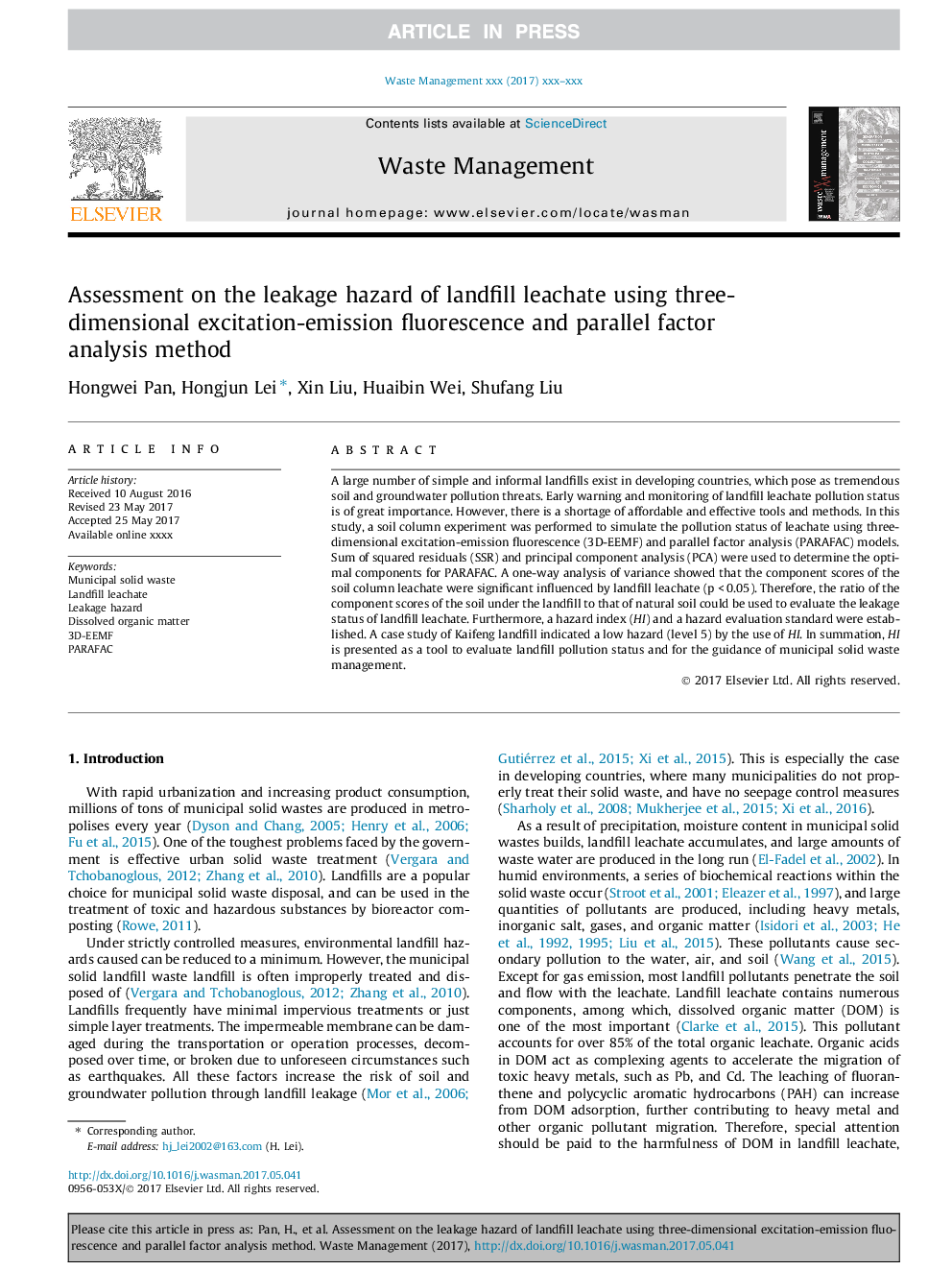| Article ID | Journal | Published Year | Pages | File Type |
|---|---|---|---|---|
| 5756656 | Waste Management | 2017 | 8 Pages |
Abstract
A large number of simple and informal landfills exist in developing countries, which pose as tremendous soil and groundwater pollution threats. Early warning and monitoring of landfill leachate pollution status is of great importance. However, there is a shortage of affordable and effective tools and methods. In this study, a soil column experiment was performed to simulate the pollution status of leachate using three-dimensional excitation-emission fluorescence (3D-EEMF) and parallel factor analysis (PARAFAC) models. Sum of squared residuals (SSR) and principal component analysis (PCA) were used to determine the optimal components for PARAFAC. A one-way analysis of variance showed that the component scores of the soil column leachate were significant influenced by landfill leachate (p < 0.05). Therefore, the ratio of the component scores of the soil under the landfill to that of natural soil could be used to evaluate the leakage status of landfill leachate. Furthermore, a hazard index (HI) and a hazard evaluation standard were established. A case study of Kaifeng landfill indicated a low hazard (level 5) by the use of HI. In summation, HI is presented as a tool to evaluate landfill pollution status and for the guidance of municipal solid waste management.
Related Topics
Physical Sciences and Engineering
Earth and Planetary Sciences
Geotechnical Engineering and Engineering Geology
Authors
Hongwei Pan, Hongjun Lei, Xin Liu, Huaibin Wei, Shufang Liu,
